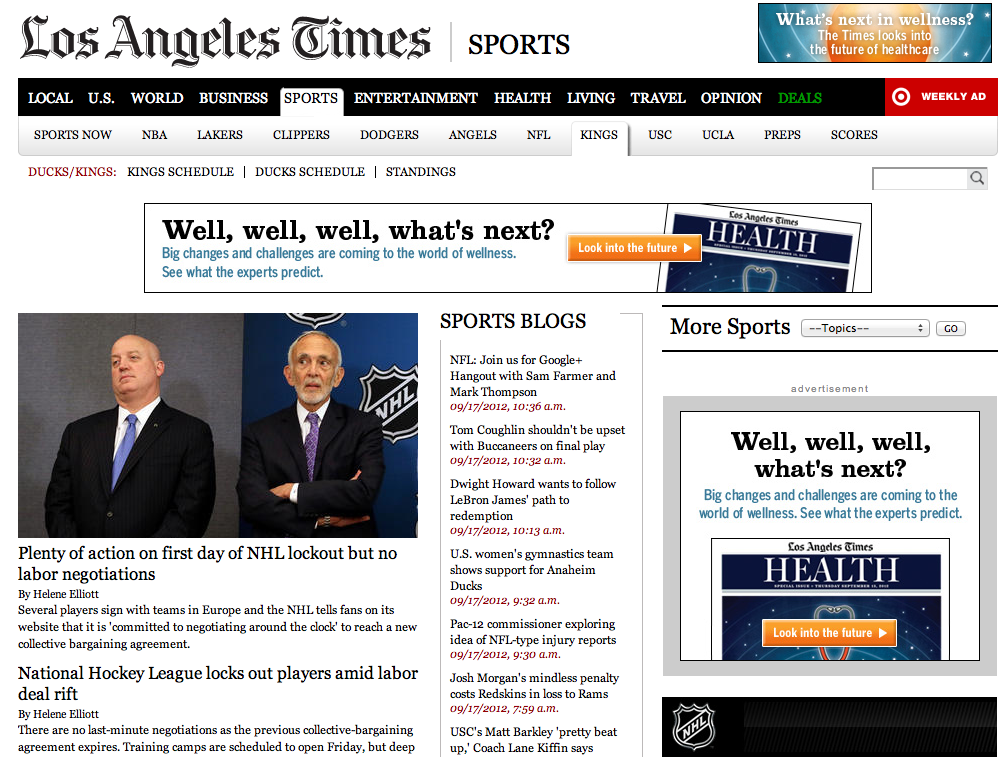The Los Angeles Kings won the 2011-2012 Stanley Cup, becoming the first no. 8 seed to in the big four sports (NFL, MLB, NHL, NBA) to win a championship. The Kings defeated the first seed Vancouver Canucks, second seed St. Louis Blues, and third seed Phoenix Coyotes to make it to the finals, and then defeated the six seed New Jersey Devils in six games. They were scheduled to raise their championship banner to the rafters of the Staples Center on Oct. 12 against the New York Rangers.
I say "were" because as of Sept 17, there is no NHL season coming.
The NHL's Board of Governors have decided to lockout the players because of a labor dispute. The owners got 43 percent of all hockey-related revenue (HRR) during the last Collective Bargaining Agreement (CBA). In the owner proposals, they have requested the players go from 57 percent to 43 percent, 46 percent, and in their latest proposal, ranging from 49 percent in the beginning of the deal to 47 percent at the end of the CBA. The players realize they have to compromise with the owners, but have yet to release a proposal where they get less than 50 percent of HRR. Their first proposal saw the players making 57 percent by the end of the CBA, but in their latest proposals, the players asked for a longer CBA with a percent smaller than 57 of HRR, but no exact number was released.
The Times does a good job of covering the original lockout and the players exodus to Europe to play hockey this season. The Times writes that several big name players, such as Sergei Gonchar, Evgeni Malkin, and Jaromir Jagr, are headed to Europe. Gonchar and Malkin will be playing in Russia's Kontinental Hockey League, while Jagr will be a part of the Czech League. I would not have expected the Times to be looking as closely to the NHL and its labor dispute, as Los Angeles is not a traditional hockey market.
The Times also covered the lockout when it happened on Sunday morning. The article not only does a nice job of introducing the lockout for fans who have not paid close attention to the league, but it also compares the lockout to the recent labor disputes in the NBA and NFL. The Times shows what the revenue split is for each respective league, and then what the NHL and NHLPA has offered each other. What it does not do, and what I am glad it does not cover, is comparing the 2004 lockout to this lockout. The two lockouts are different because of the main issues and amount of money at stake, and thus should not be compared to each other.
As a die-hard hockey fan, I am pleased with the Times's coverage of the first few days of the NHL lockout. Their articles not only touch on what the fundamental problems are with the old CBA and the new CBA proposals, but also how players are reacting to the lockout. While the parts stand on completely different sides, the stories also touch on the optimism of not only the league officials, but those outside of the sport, to get a deal done before significant amount of time is lost.
As both a fan and a hockey writer, I hope they are right.


 RSS Feed
RSS Feed